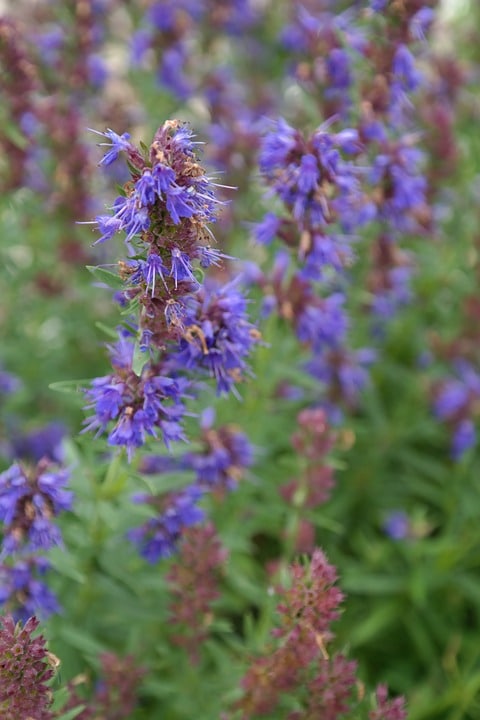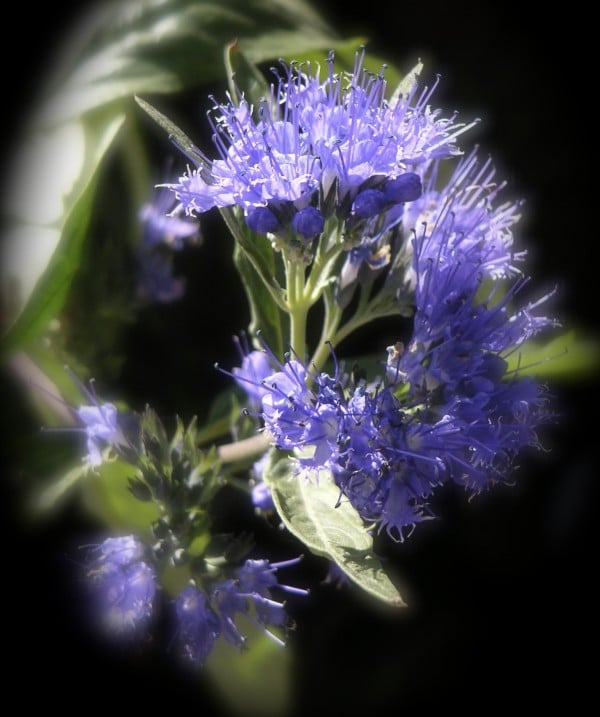Hyssop growing techniques – A step by Step Guide
Let us learn today about Hyssop growing methods, tips and ideas. Hyssop which is scientifically called as Hyssopus officinalis is a compact herb whose flowers are in white, blue or pink colors. The leaves of Hyssop will have an aroma which is pungent and is somewhat spicy. Though it is not a culinary herb, you can make use of it in soups, stews, stuffings, and sauces if you want. The flowers of this plant are edible and are mostly used for decoration purposes.
Hyssop will grow up to a height of 24 inches. The width of Hyssop will be half of its length. The leaves of the Hyssop will be long and also oval in shape. The leaves will be dark green in color. Blooms will be blue or purple in color and they will turn to white or pink from the middle of summer to the middle of autumn. Hyssop has a very strong aroma all across its leaves, stem, and flowers.

Preparation of soil for growing Hyssop:
- Start preparing the area of the plantation for Hyssop. The area has to receive full sun. The soil should be drained well and light and the pH of the soil should be 6. Alkaline nature of the soil is better.
- The soil has to be dampened before plantation.
Propagation of Hyssop:
- Instead of making use of seeds, you can also try one of the methods of propagation to quicken the growth and the process will be slow when it is grown from seed to a plant which is productive.
- This is how you can grow Hyssop from cuttings.
- Take out the shoot which is healthy and does not have any flower, along with some heel which is the woody part of the plant.
- You can make a cut which is clean across the heak’s base and take off the lower leaves by making use of a knife which is clean and sharp.
- You can dip in the hormone rooting powder.
- The Hyssop has to be planted so that the soil will reach almost to the top of the leaves which has been left on but you have to leave some amount of stem which is peeking up.
- You will have to keep it in a spot which is cool and have to keep it out from the sunlight as the cuttings will take root.
- You will have to mist for the first seven days or so but do not do it too much.
- The roots are expected to form within a month. They can be grown as usual or they can also undergo replantation in the garden.
You may be interested in Growing Organic Tomatoes on the Terrace.
Plantation of Hyssop:

- The seeds of the Hyssop have to be planted in the soil which is damp early in the spring. The seeds must be placed at a distance of 30 cms from each other or you can also thin the seedlings in the later stages.
- The Hyssop has to be watered and kept free from weeds as the plants start growing. Hyssop will require less care but will not love to have some amount of manure and mixed fertilizer at the end of winter for the encouragement of new growth.
- To avoid the plants which are scraggly, it is essential to trim the plants after it completes flowering and again at the end of winter.
- In the climatic conditions which are harsh, the Hyssop has to be replaced for at least five years of growth. Hyssop will be able to withstand the temperatures which are cold, if they are subjected to harsh winters, Hyssop will fail to survive after a few years and they will have to be replaced.
Harvesting Hyssop:
- The flowers and the flowering tops which are young has to be picked as soon as flowering begins. This happens when the flowers grow at their best.
- The leaves have to be picked at the time of growth.
Using Hyssop:
- The flowers of Hyssop have to be added to ice cubes, salads and use it as a garnish. They have to be used in the place of violets for the flowers which are candied or sugared.
- The leaves can be used in the dishes of meat, fish and also salads. It can also be used in soups, fruit salads, vegetable bakes, and pulses.
- You can also make use of it as a companion plant. If the Hyssop is grown closer to cabbages, it will act as a decoy plant and will keep some of the bugs like white cabbage butterflies from the cabbages.
- It can also be used in the potpourri for imparting its fragrance. Flowers and also dried leaves can also be used in potpourri.
- You can also prepare a tea from Hyssop for the purpose of medicine like helping with cough and also for the improvement of digestion. You can also go through a few books which are an herbal remedy for the directions.
You may also check How to Grow Kale at Home.
Facts about Hyssop:

- Hyssop is a perennial herb. Hyssop will be in a dark green color.
- The flavor of Hyssop will have an element of strong mint. They also have floral notes the same as that of lavender.
- Though most of the Hyssops have to be grown in the herb gardens, they can also be grown in flower gardens. The plants of Hyssop can be grown in the areas where there is the availability of full sun or partial shade.
- Hyssop is also tolerant of drought and this will also attract butterflies.
You may read about Goat Farming In India.